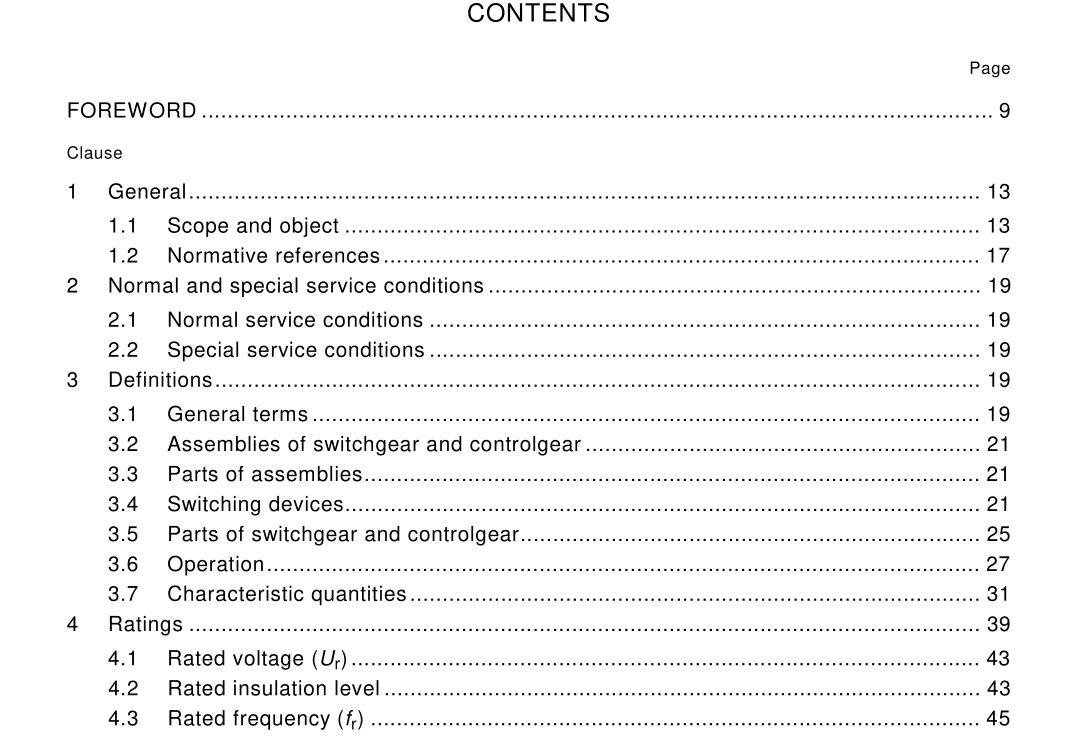IEC 60470 pdf download

IEC 60470 pdf download.High-voltage alternating current contactors and contactor-based motor-starters
1 General
1 .1 Scope and object
This International Standard is applicable to a.c. contactors and/or contactor-based motor- starters designed for indoor installation and operation at frequencies up to and including 60 Hz on systems having voltages above 1 000 V but not exceeding 1 2 000 V. It is applicable only to three-pole contactors and starters for use in three-phase systems, and single-pole contactors and starters for use in single-phase systems. Two-pole contactors and starters for use in single-phase systems are subject to agreement between manufacturer and user. Contactors and/or starters dealt with in this standard are not normally designed to interrupt short-circuit currents. Therefore, suitable short-circuit protection (see 3.4.1 1 0.1 2 and note 2 below) forms part of the installation, but not necessarily of the contactor or the starter. In this context, this standard gives requirements for – contactors associated with overload and/or short-circuit protective devices (SCPD); – starters associated with separate short-circuit protective devices and/or with separate short-circuit and integrated overload protective devices; – contactors or starters combined, under specified conditions, with their own short-circuit protective devices. Such combinations, for example combination starters (see 3.4.1 1 0.9), are rated as units. Contactors intended for closing and opening electric circuits and, if combined with suitable relays, for protecting these circuits against operating overloads which may occur therein, are covered in this standard. This standard is also applicable to the operating devices of contactors and to their auxiliary equipment. Motor-starters intended to start and accelerate motors to normal speed, to ensure continuous operation of motors, to switch off the supply from the motor and to provide means for the protection of motors and associated circuits against operating overloads are dealt with.
Starters, the operation of which depends on thermal electrical relays for motor protection complying with IEC 60255-8, or motor-incorporated thermal protective devices dealt with in IEC 60034-1 1 , do not necessarily meet all the relevant requirements of this standard. Overload relays for starters, including those based on solid-state technology, are covered by this standard. This standard does not apply to – circuit-breaker-based motor-starters; – single-pole operation of multi-pole contactors or starters; – two-step auto-transformer starters designed for continuous operation in the starting position; – unbalanced rheostatic rotor starters, i.e. where the resistances do not have the same value in all phases; – equipment designed not only for starting, but also for adjustment of speed; – liquid starters and those of the “liquid-vapour” type; – semiconductor contactors and starters making use of semiconductor contactors in the main circuit; – rheostatic stator starters; – contactors or starters designed for special applications. This standard does not deal with components contained in contactors and contactor-based motor-starters, for which individual specifications exist. NOTE 1 Thermal electrical relays are covered by IEC 60255-8. NOTE 2 High-voltage current-limiting fuses are covered by IEC 60282-1 and IEC 60644. NOTE 3 Metal-enclosed switchgear and controlgear for rated voltages above 1 kV and up to and including 52 kV are covered by IEC 60298. NOTE 4 Disconnectors and earthing switches are covered by IEC 601 29. NOTE 5 High-voltage switches above 1 kV and less than 52 kV are covered by IEC 60265-1 . The object of this standard is to state a) the characteristics of contactors and starters and associated equipment; b) the conditions with which contactors or starters shall comply with reference to: 1 ) their operation and behaviour, 2) their dielectric properties, 3) the degrees of protection provided by their enclosures, where applicable, 4) their construction.
1 .2 Normative references
The following normative documents contain provisions which, through reference in this text, constitute provisions of this International Standard. For dated references, subsequent amendments to, or revisions of, any of these publications do not apply. However, parties to agreements based on this International Standard are encouraged to investigate the possibility of applying the most recent editions of the normative documents indicated below. For undated references, the latest edition of the normative document referred to applies. Members of IEC and ISO maintain registers of currently valid International Standards.









